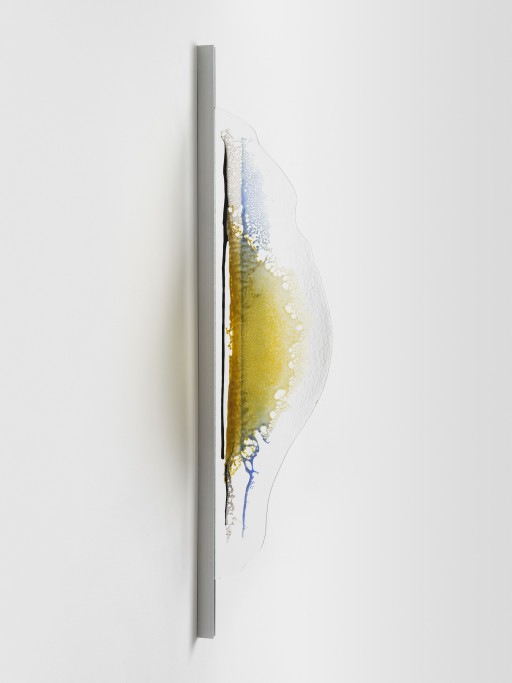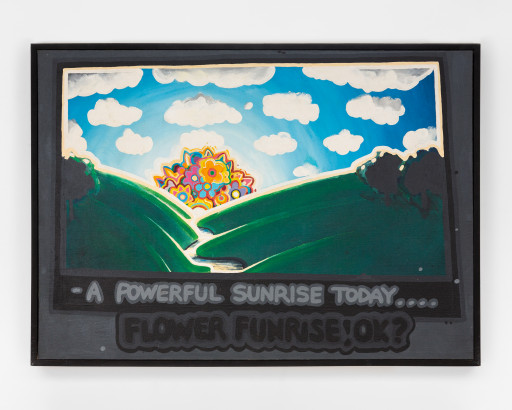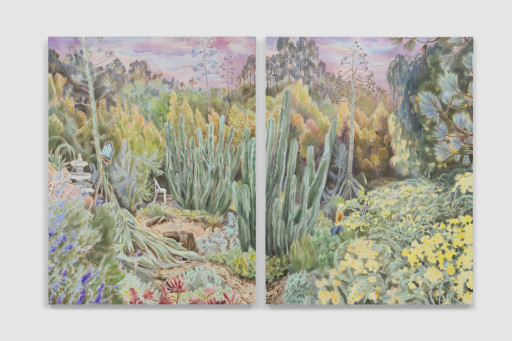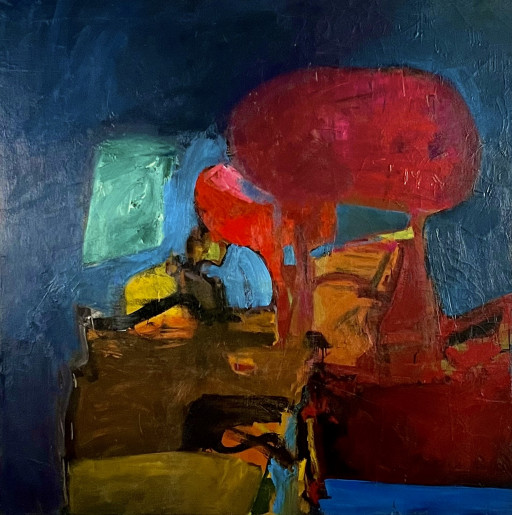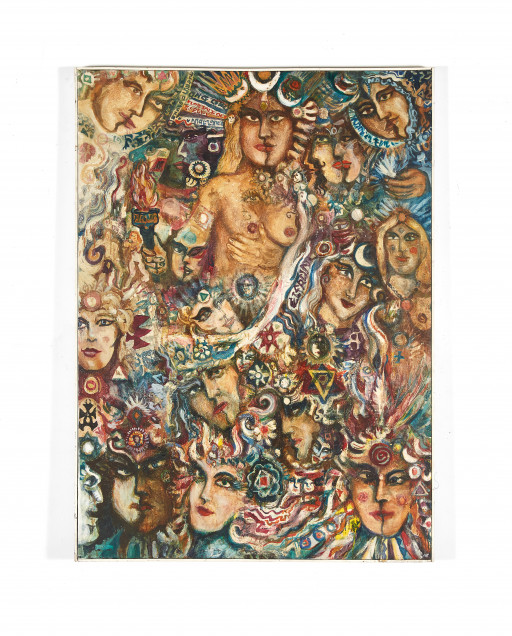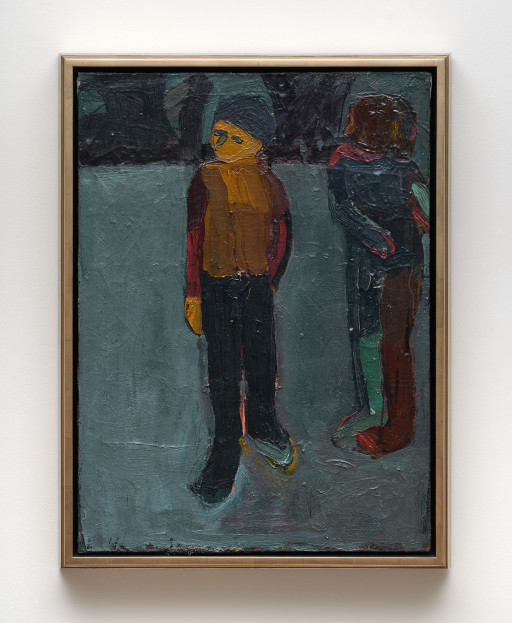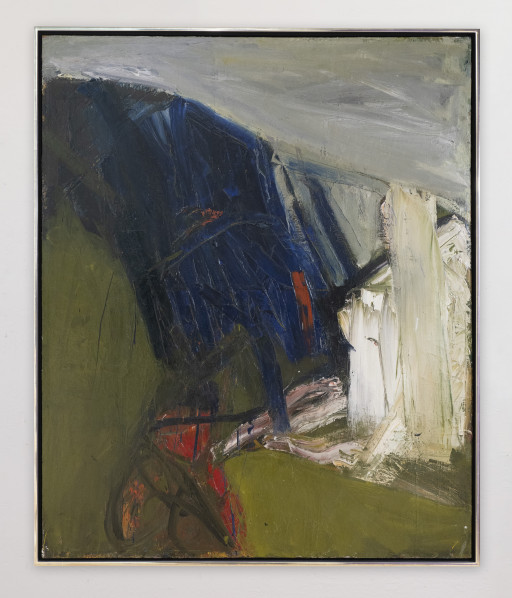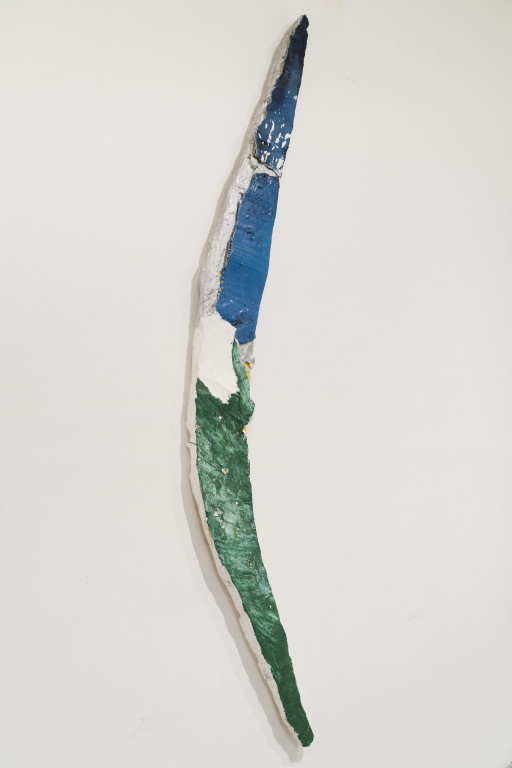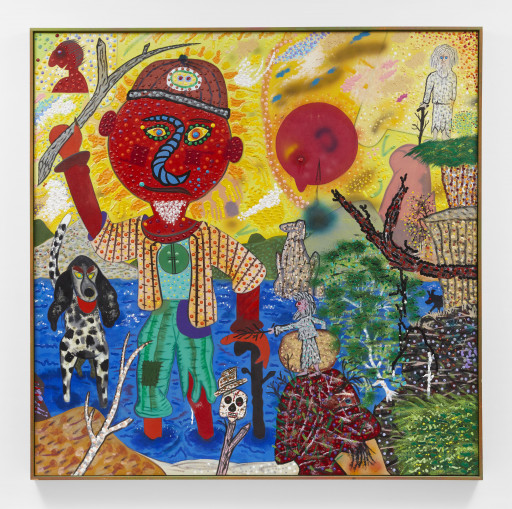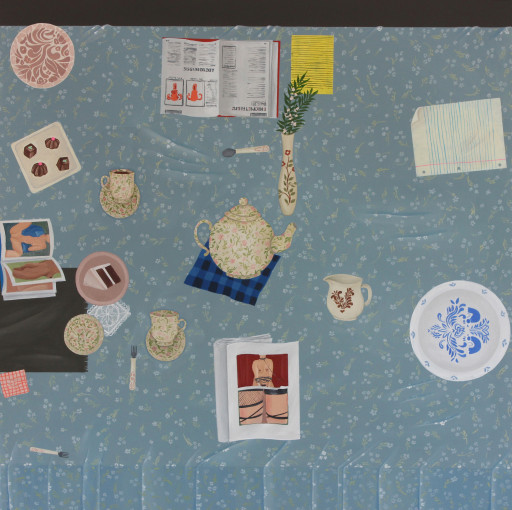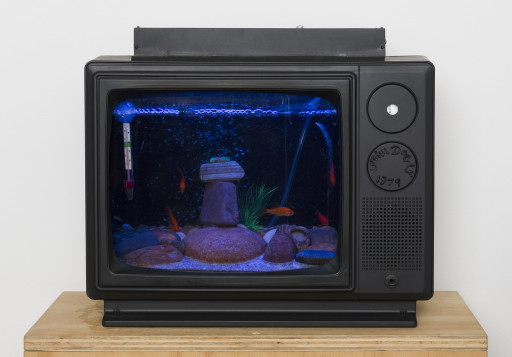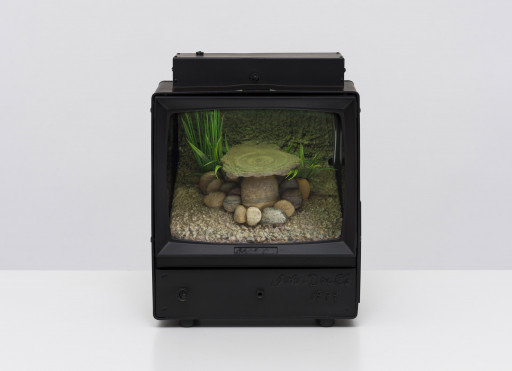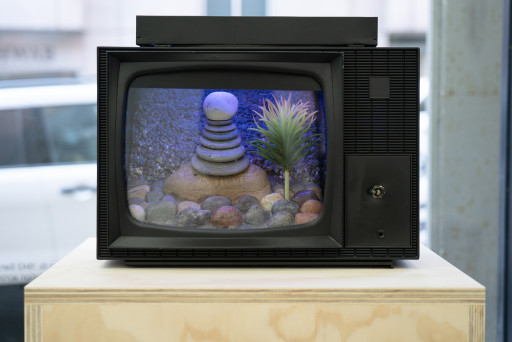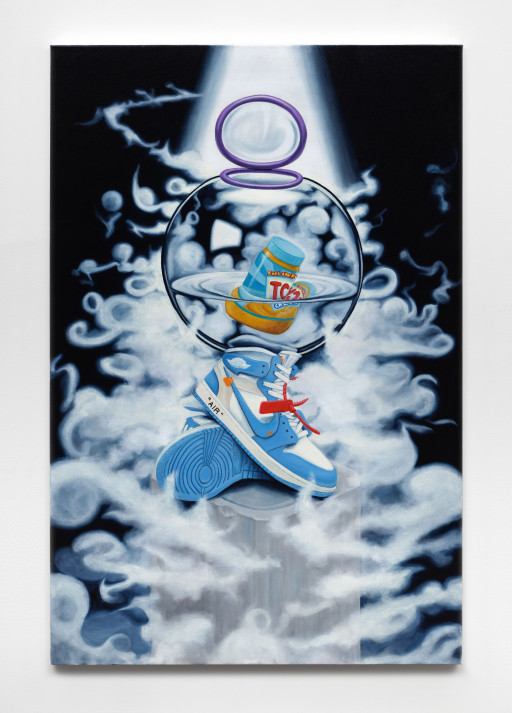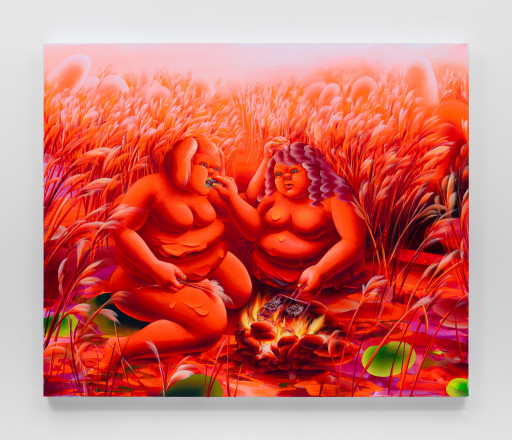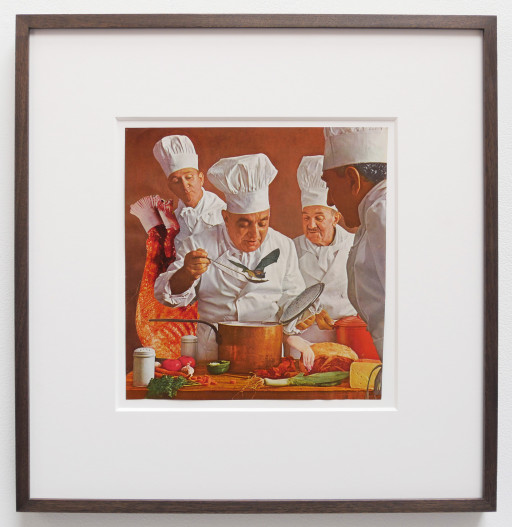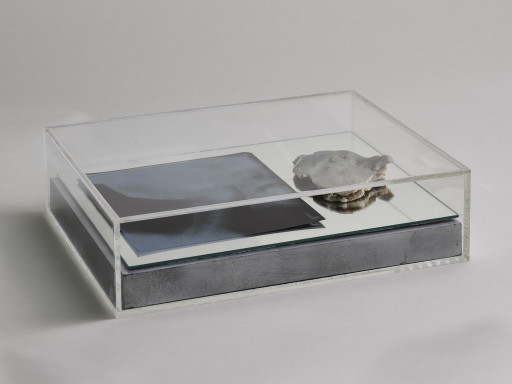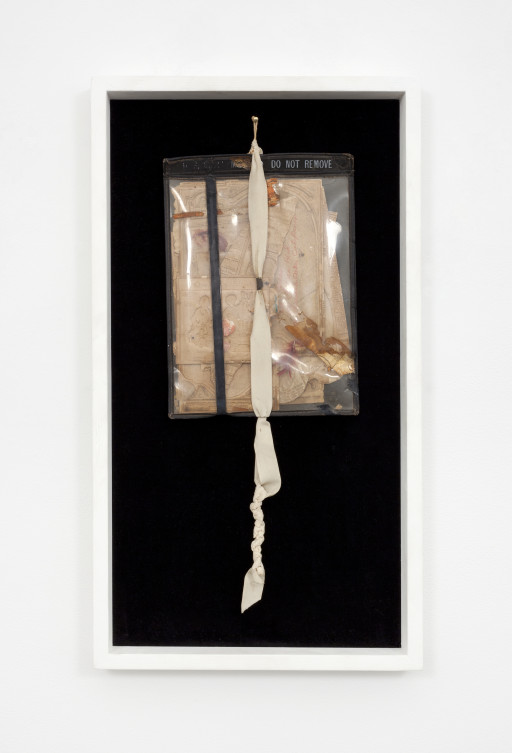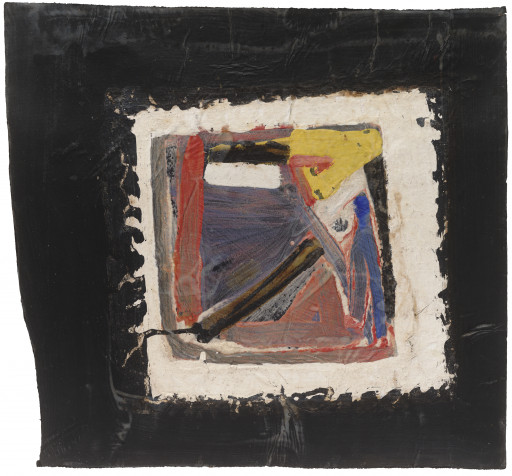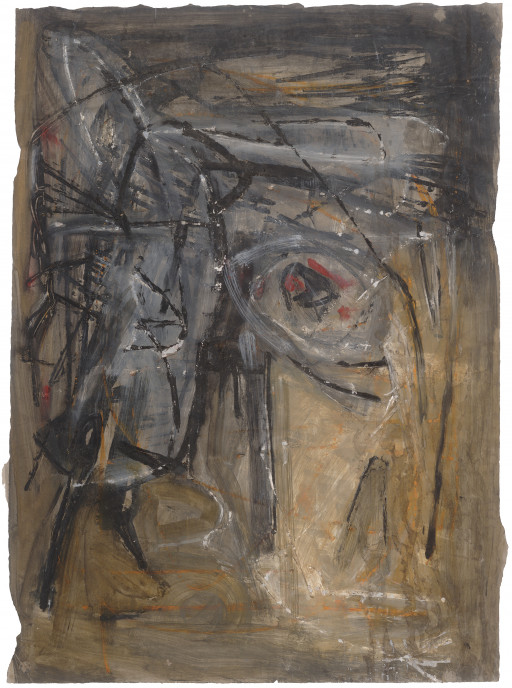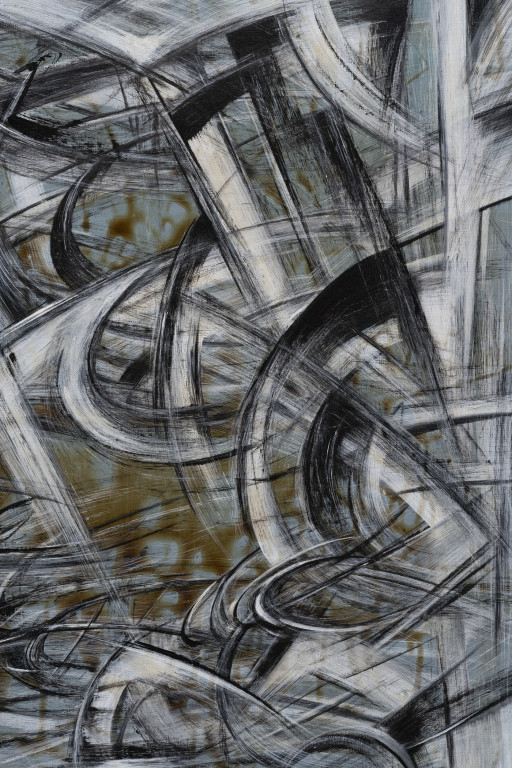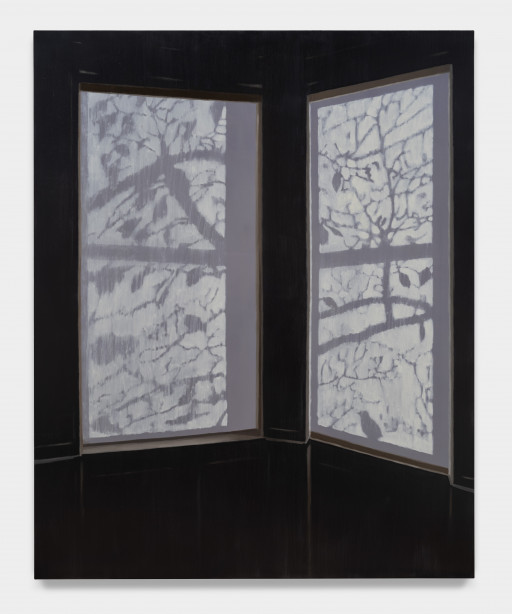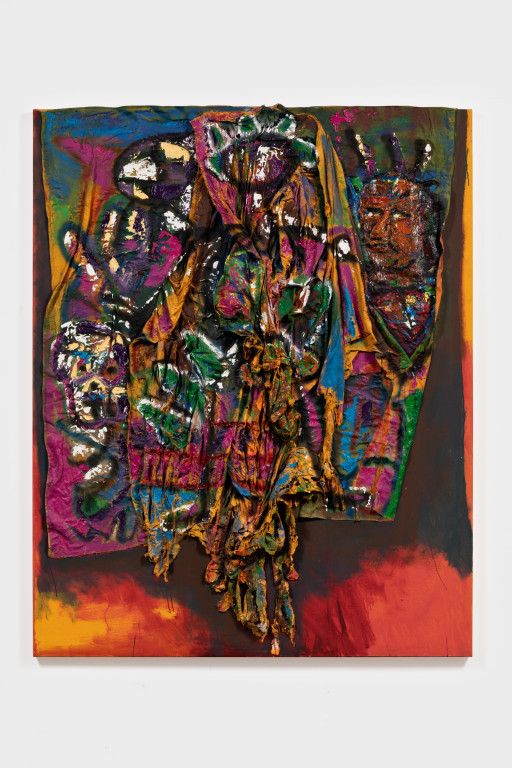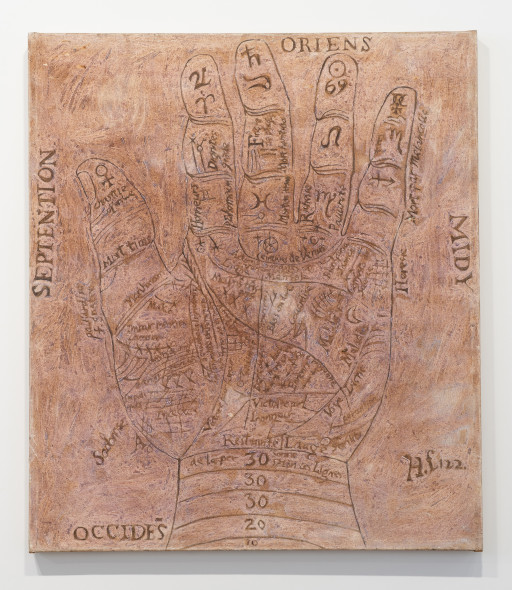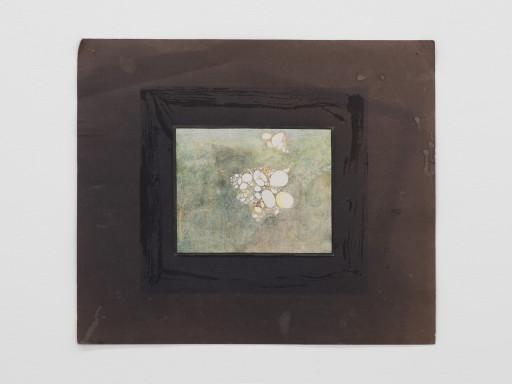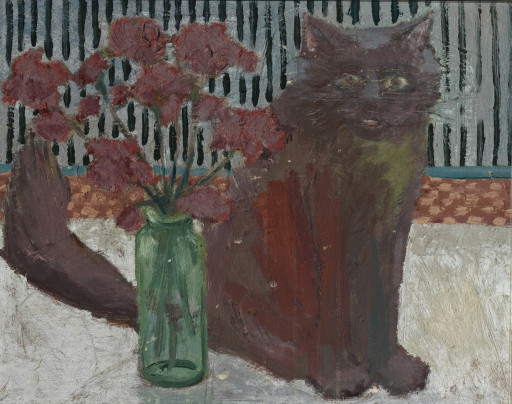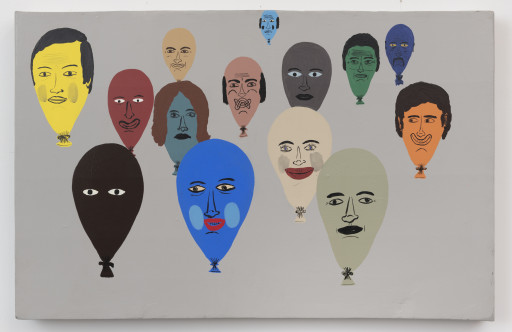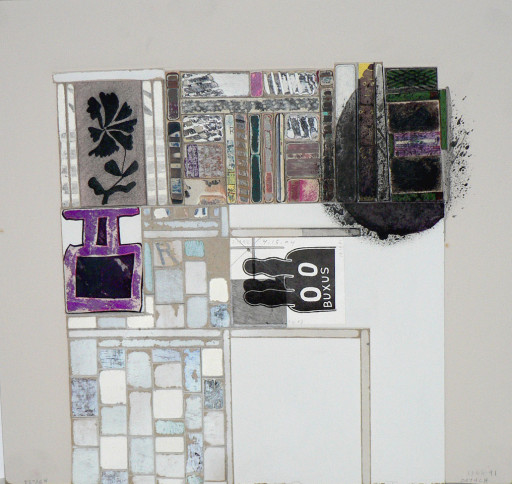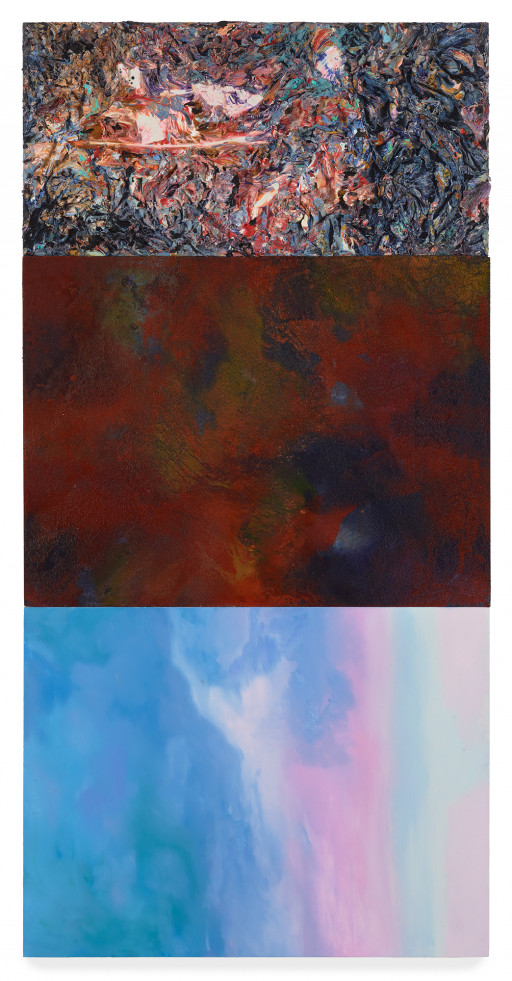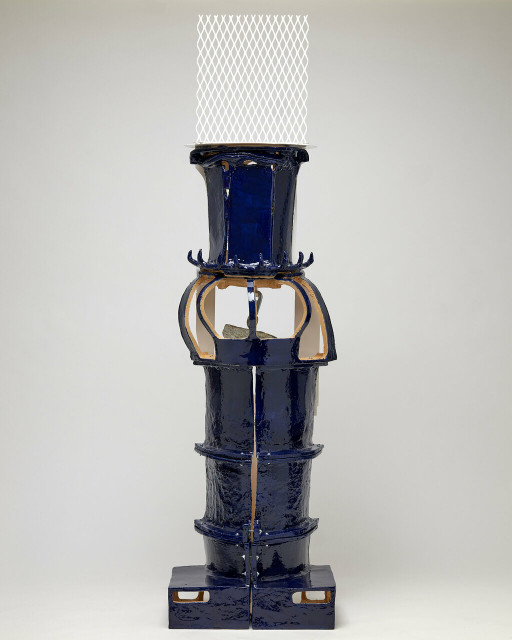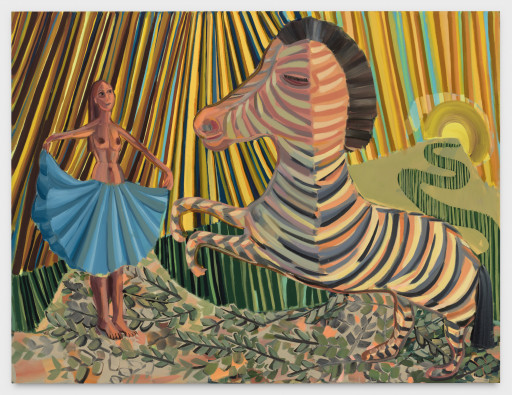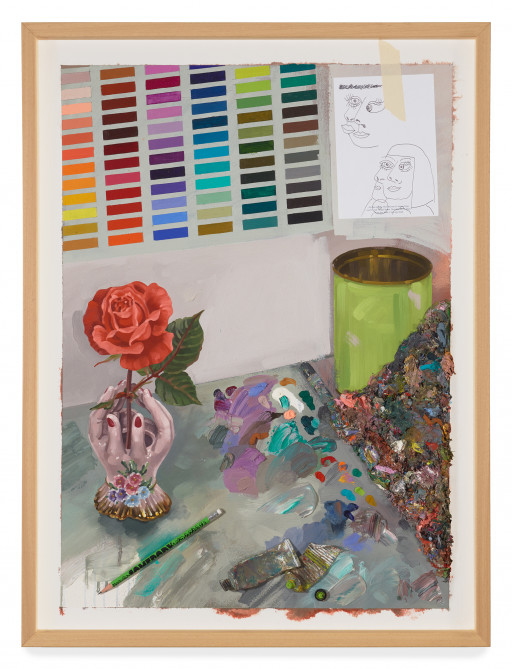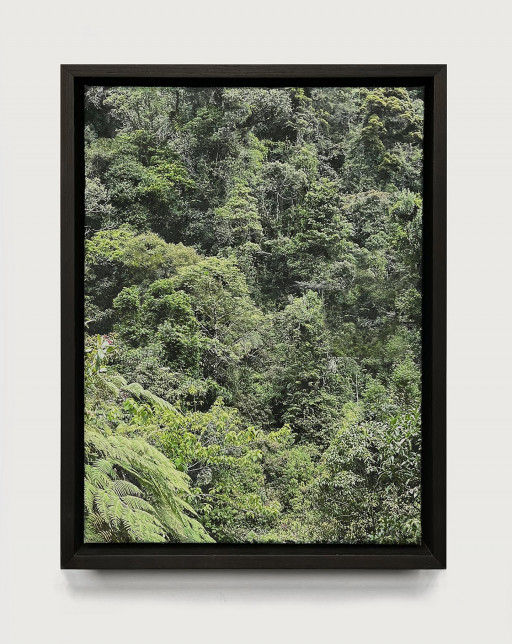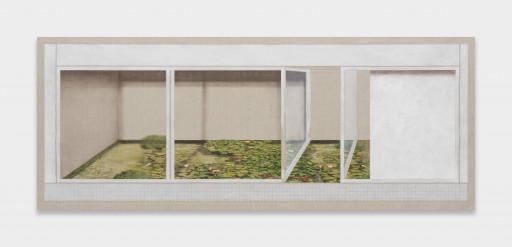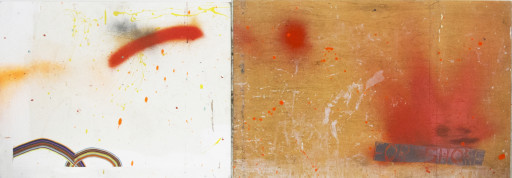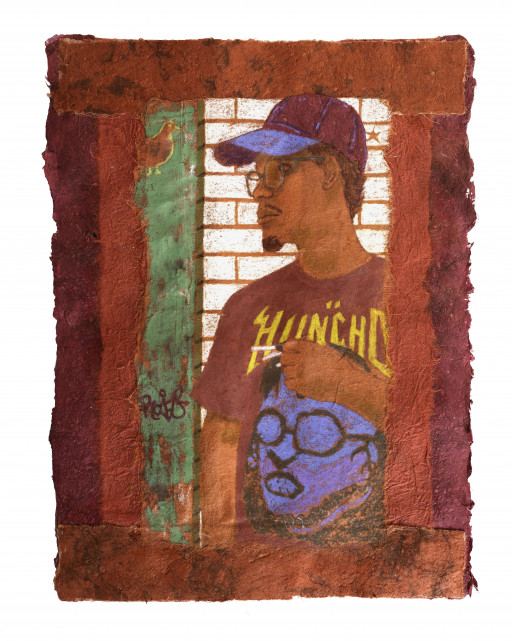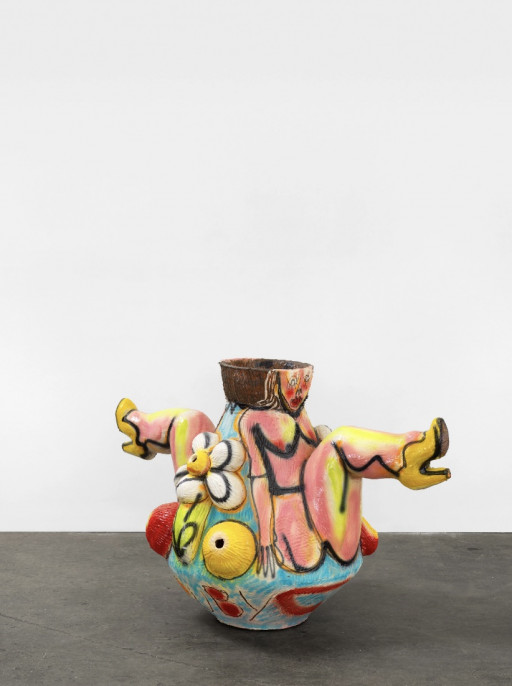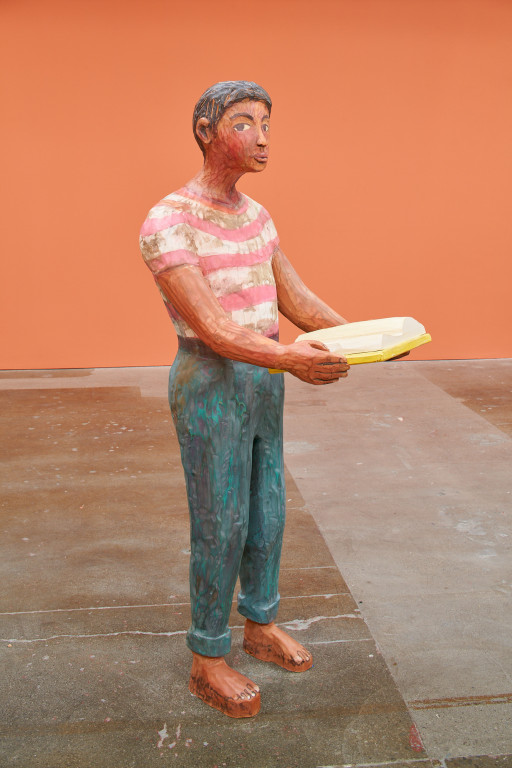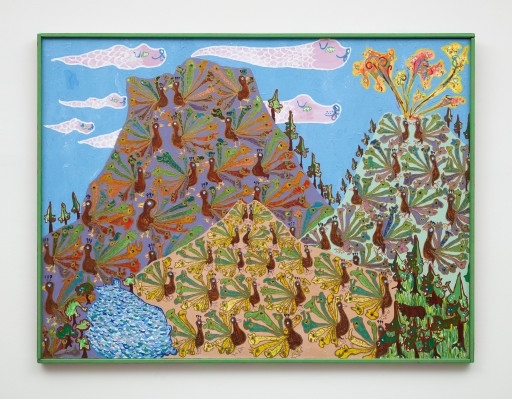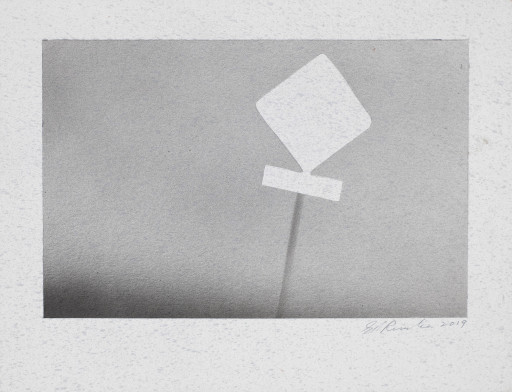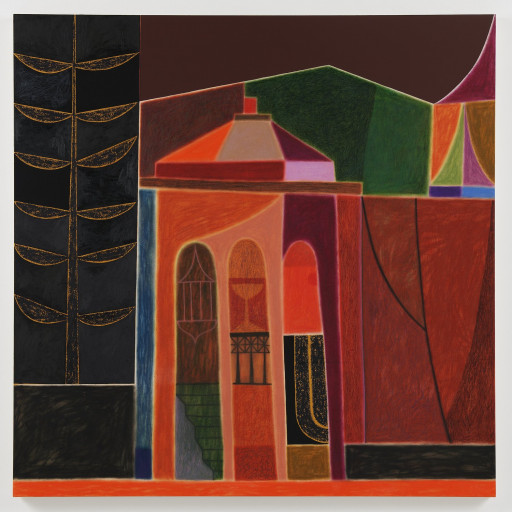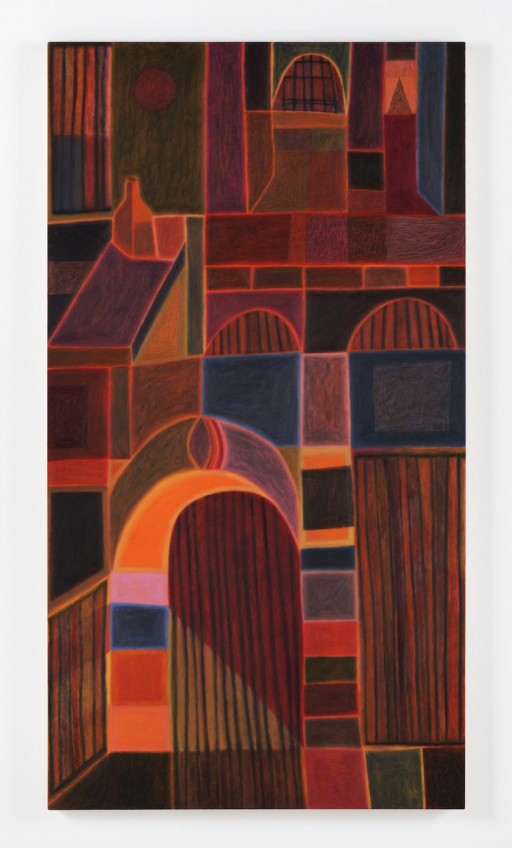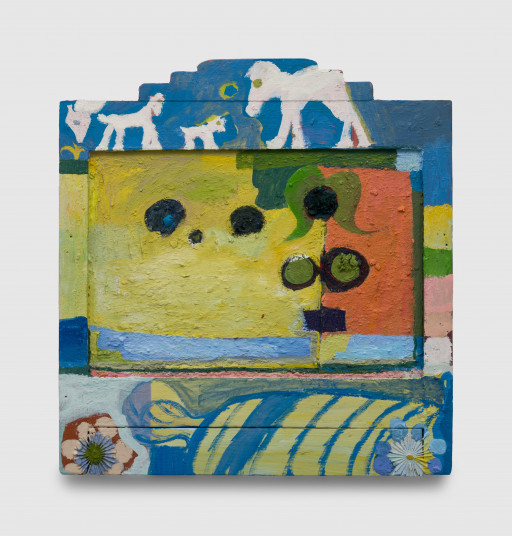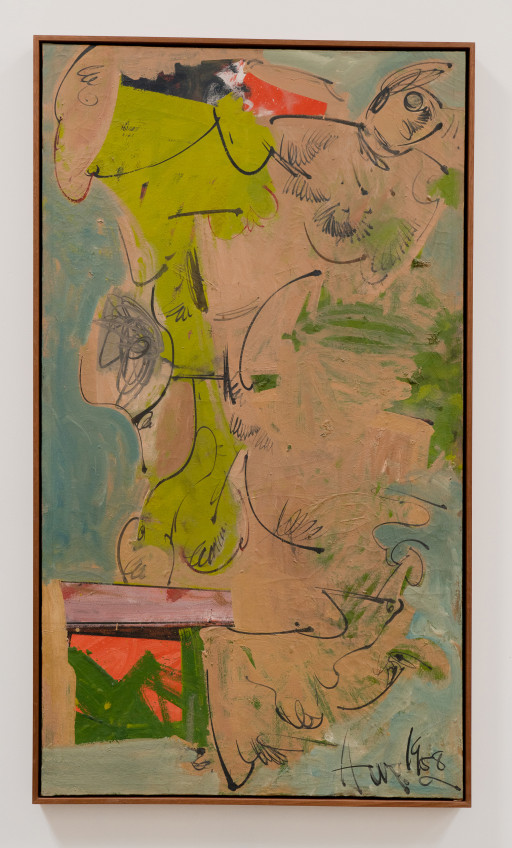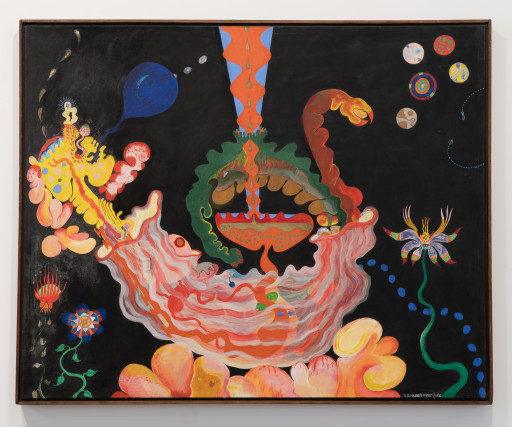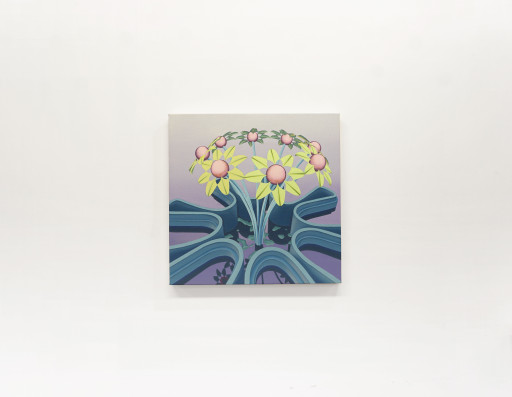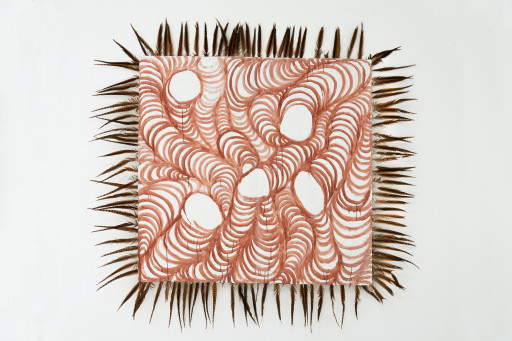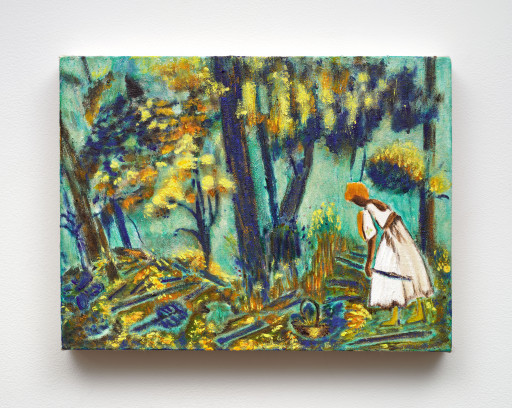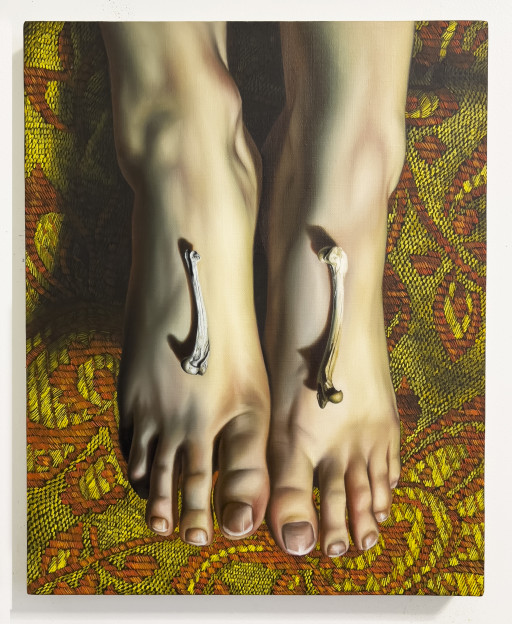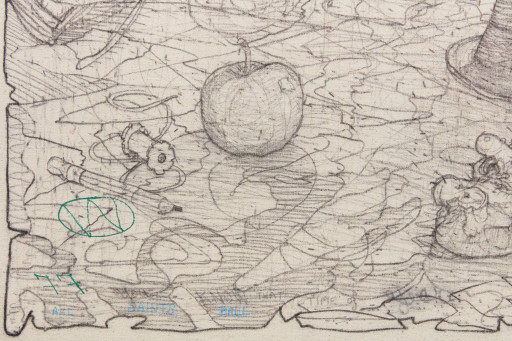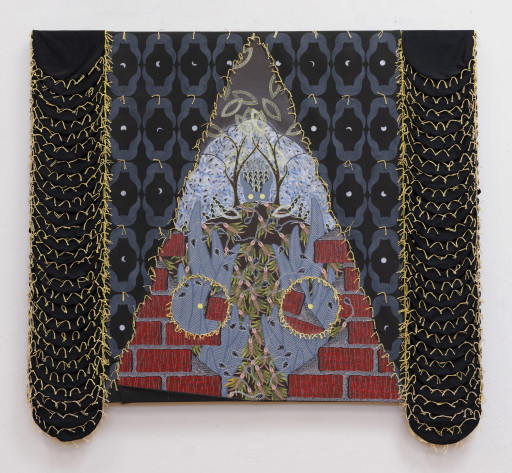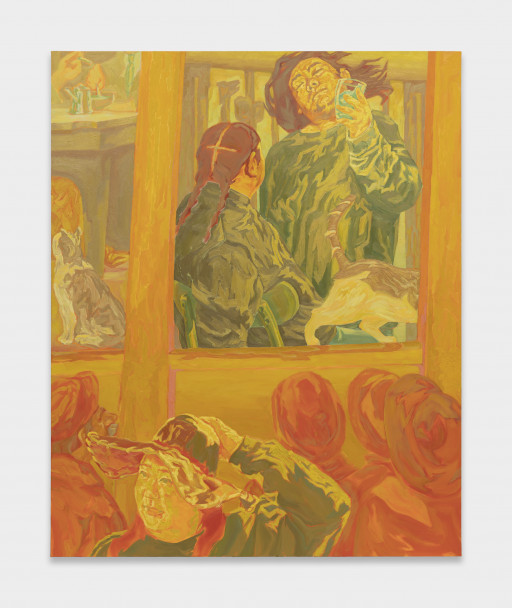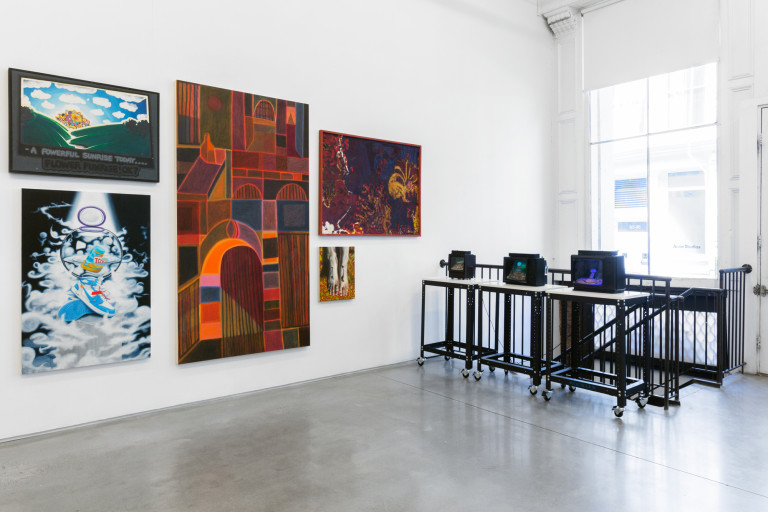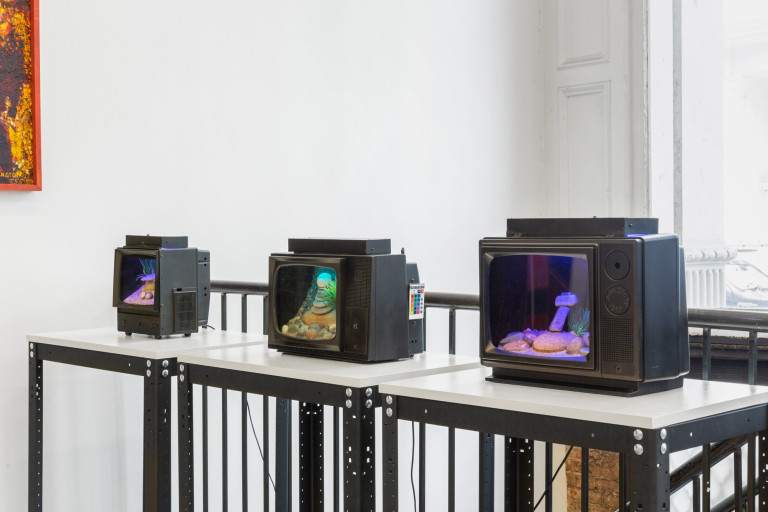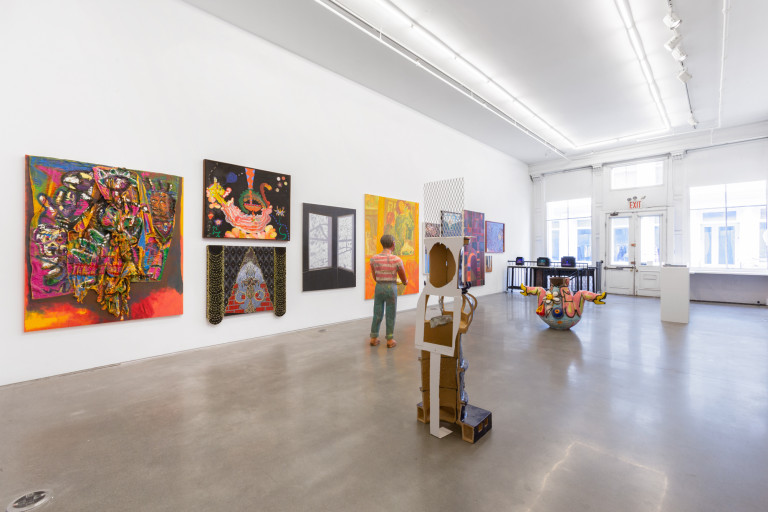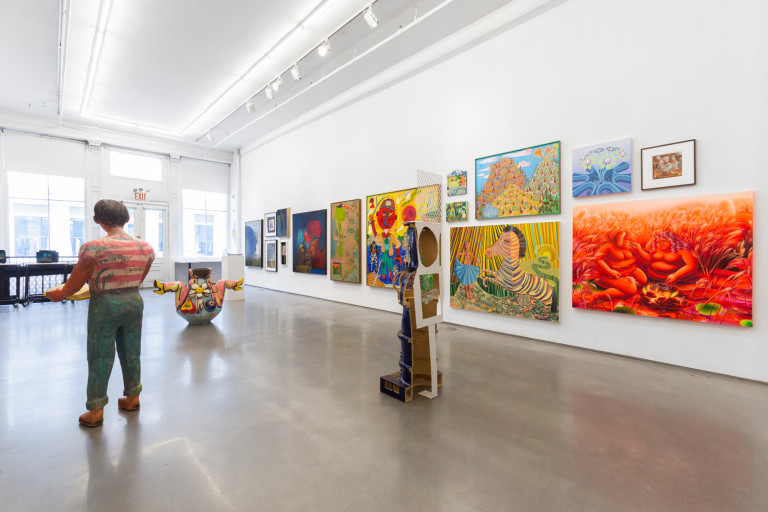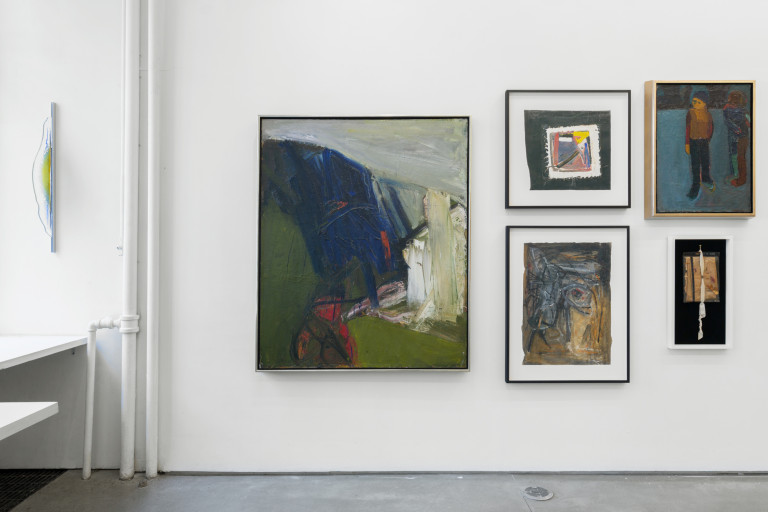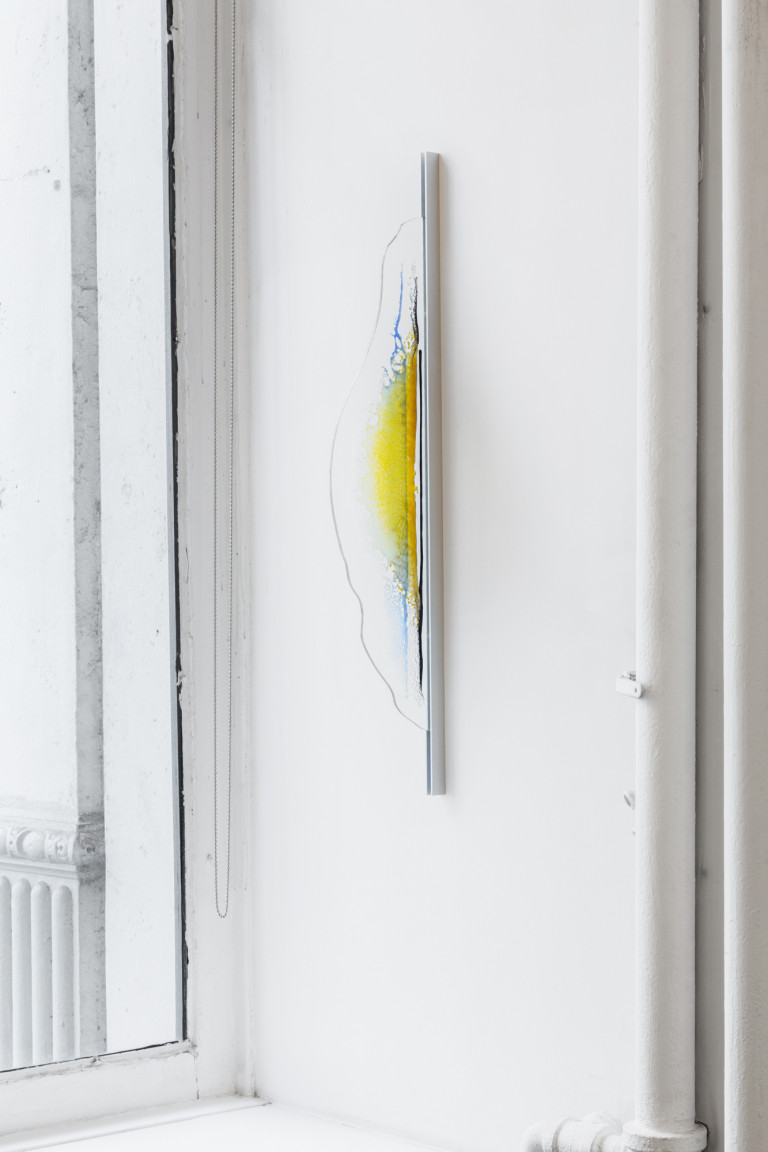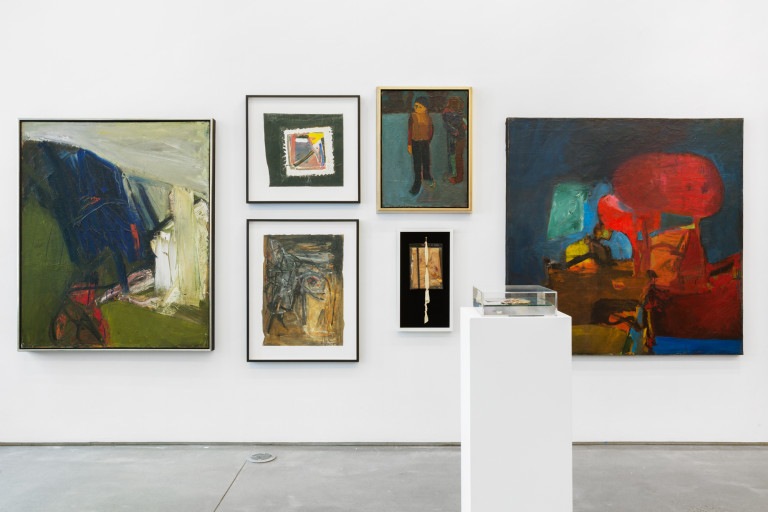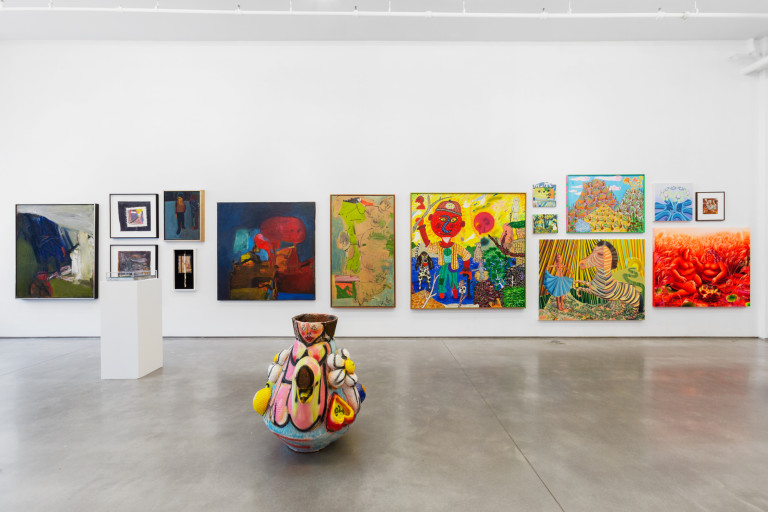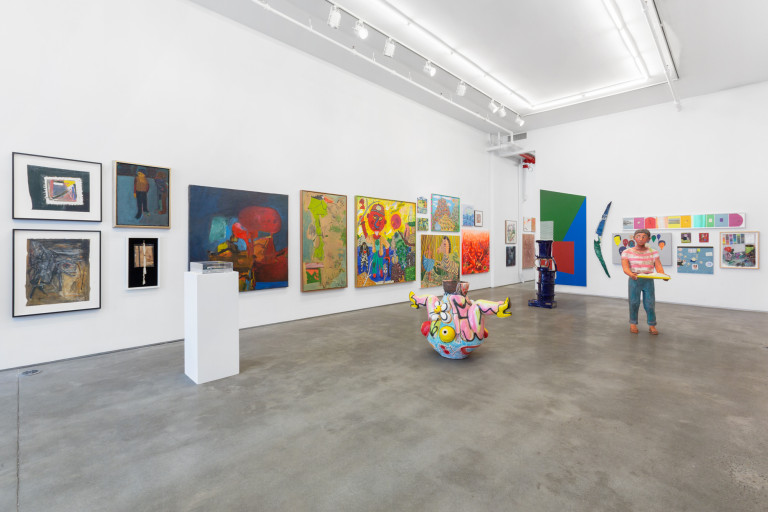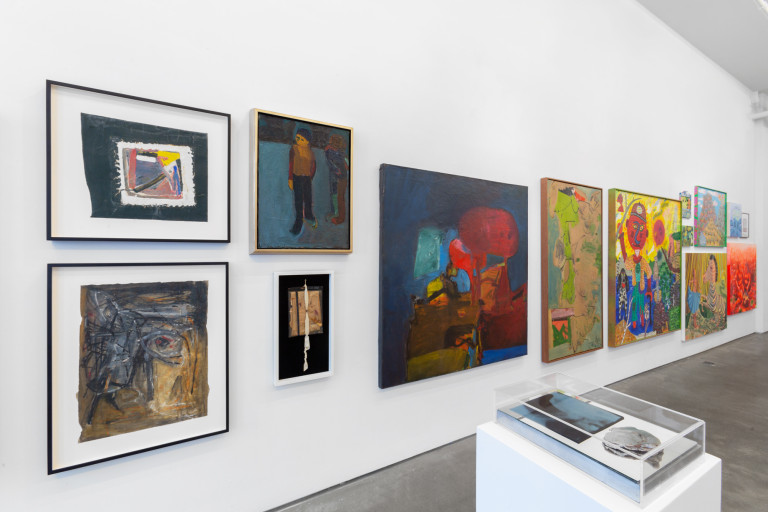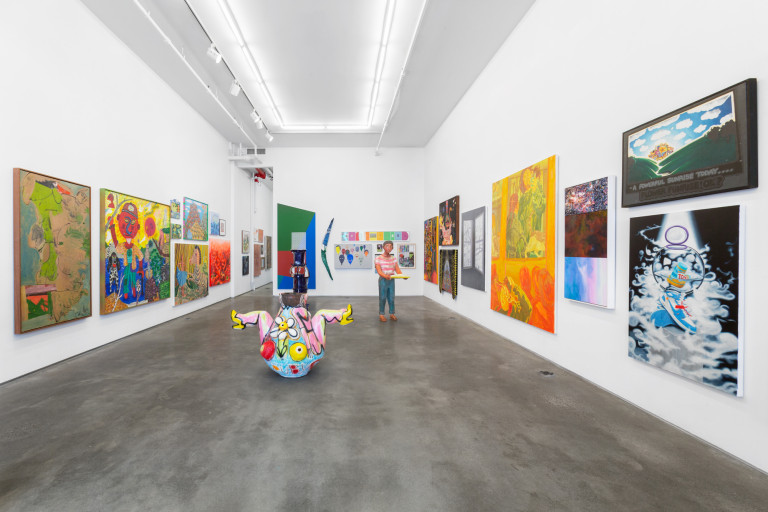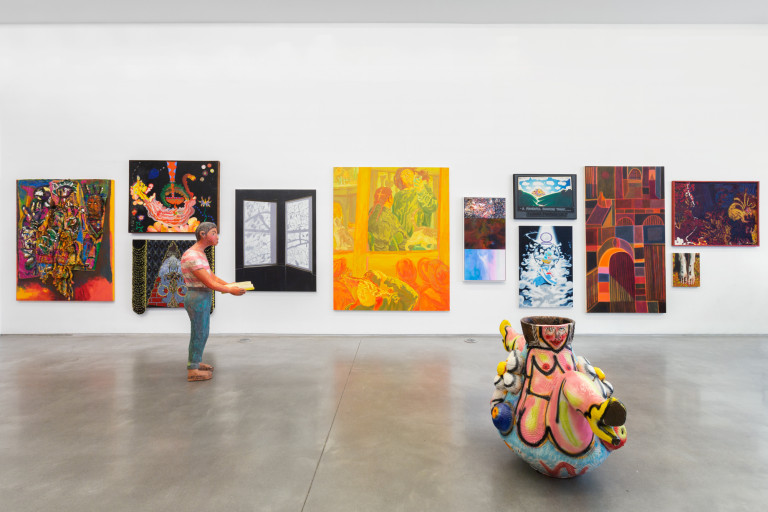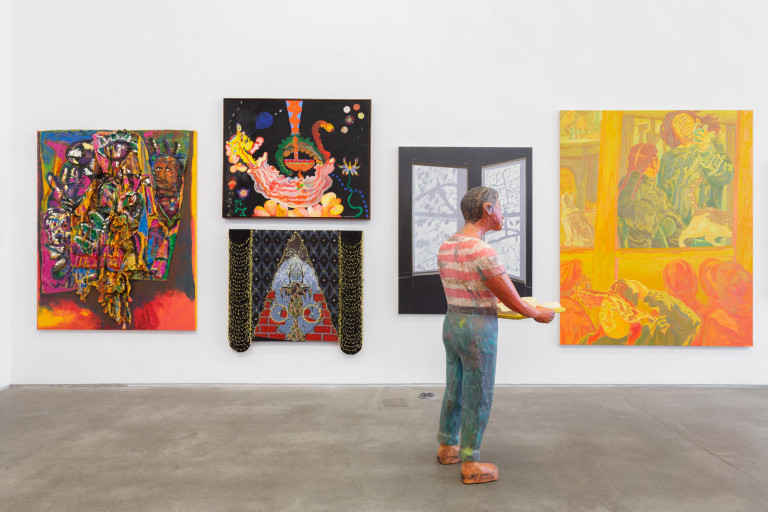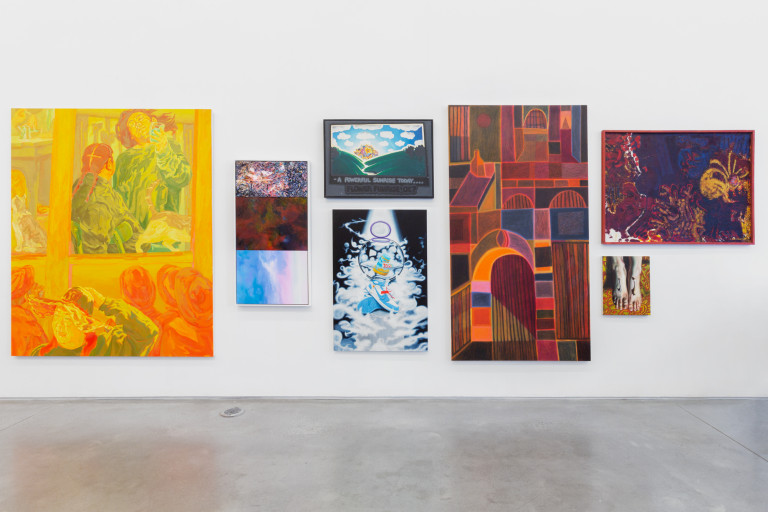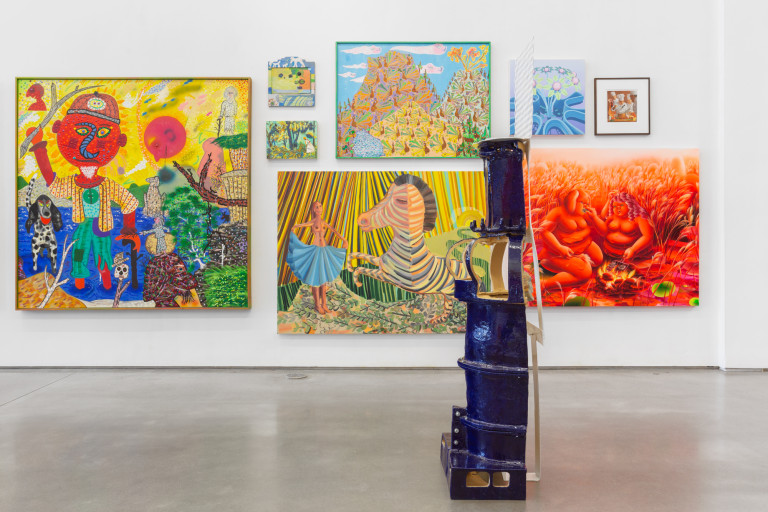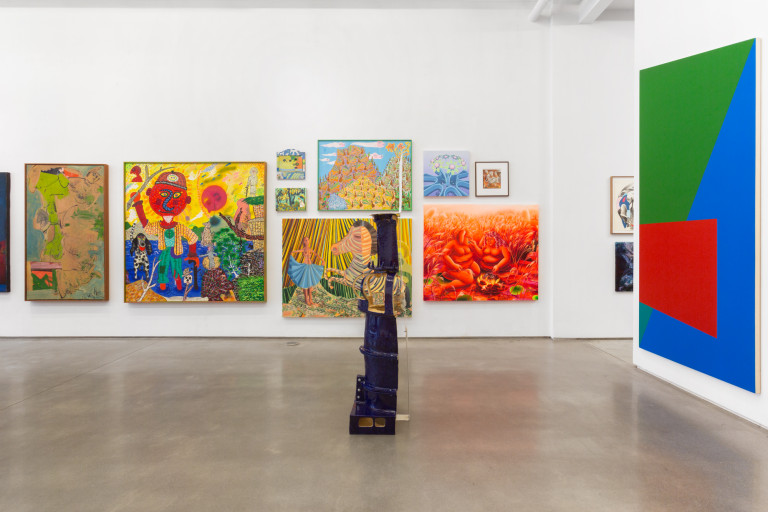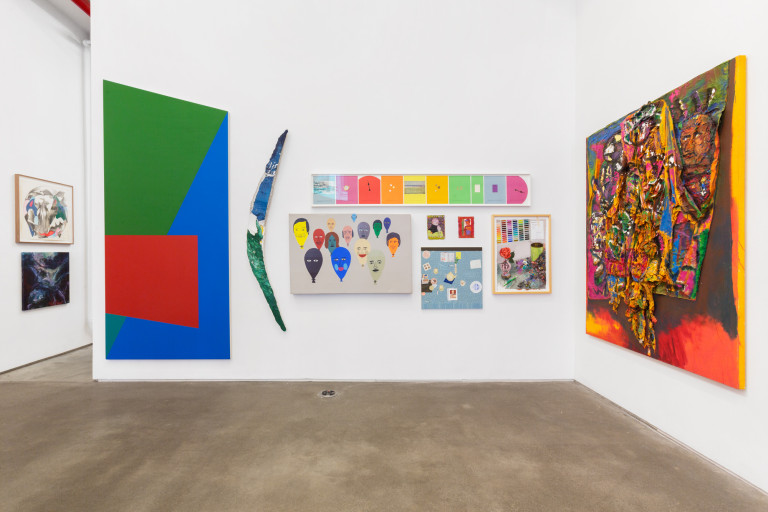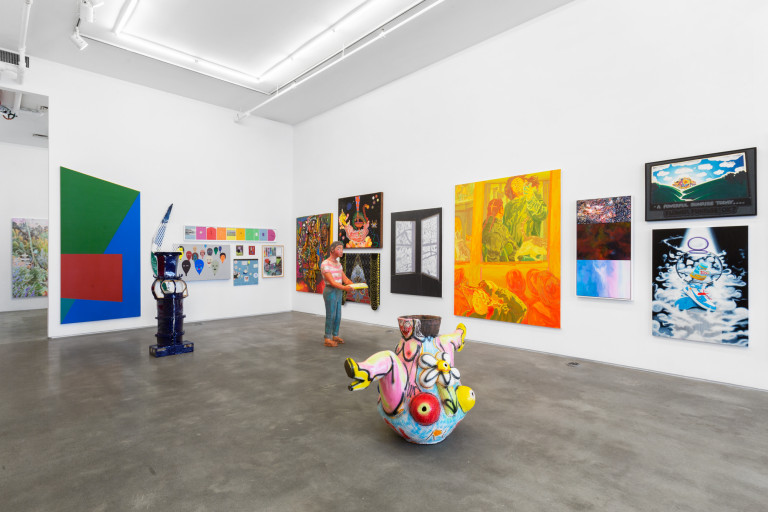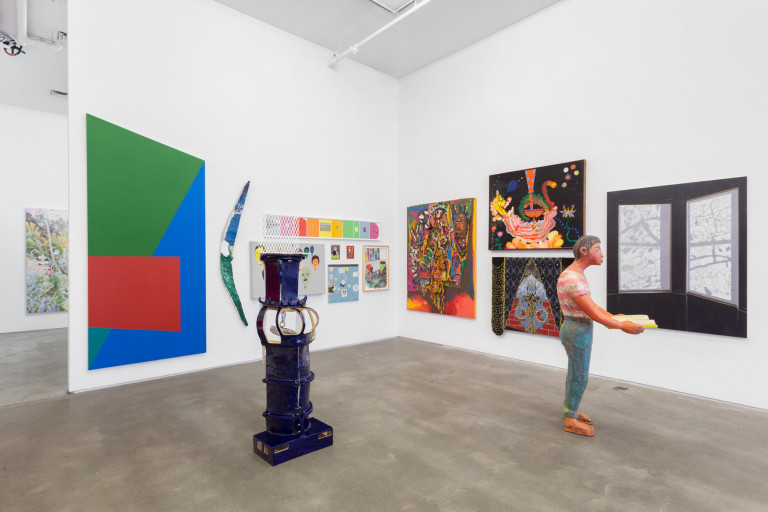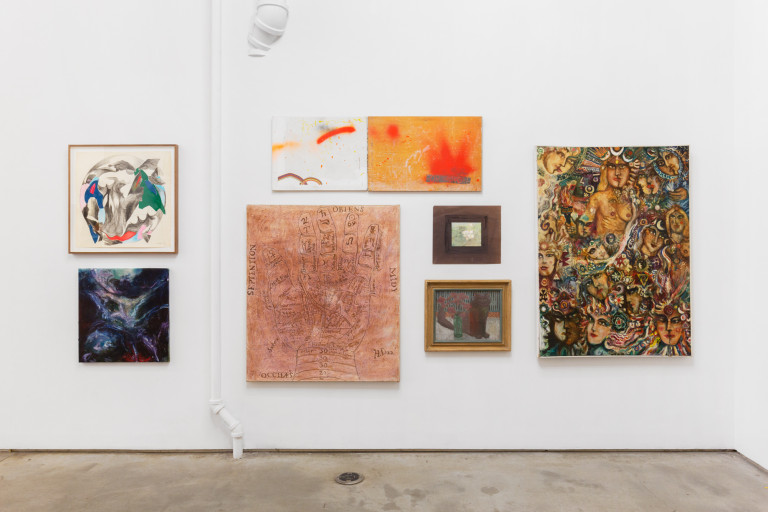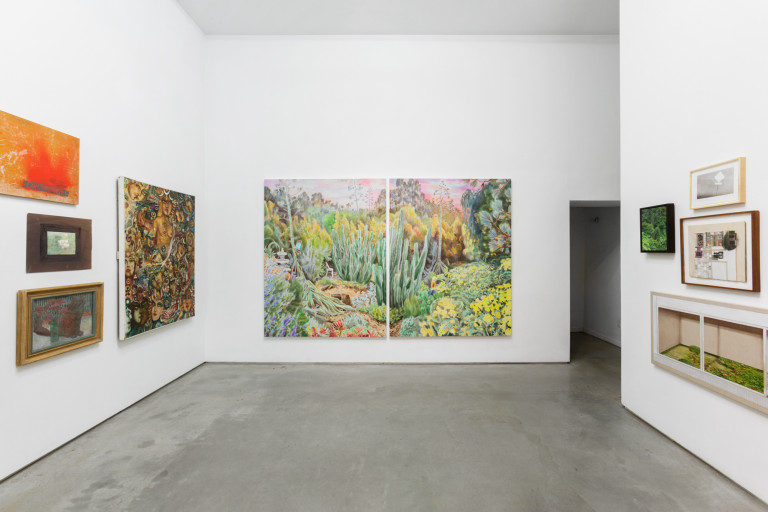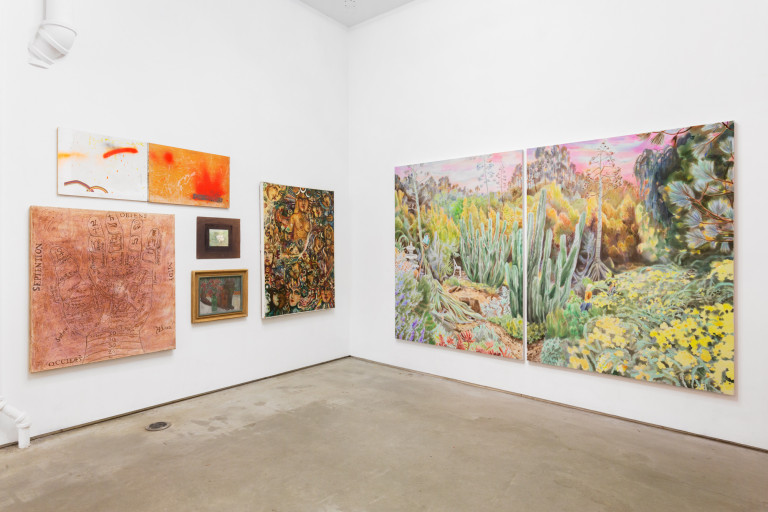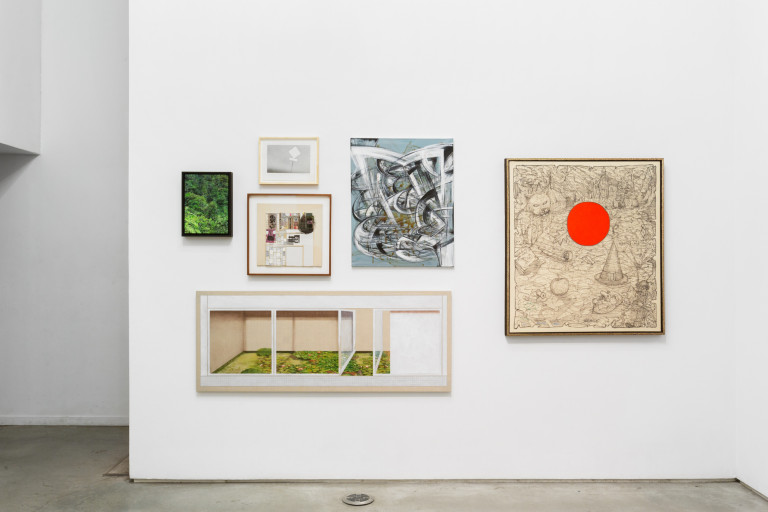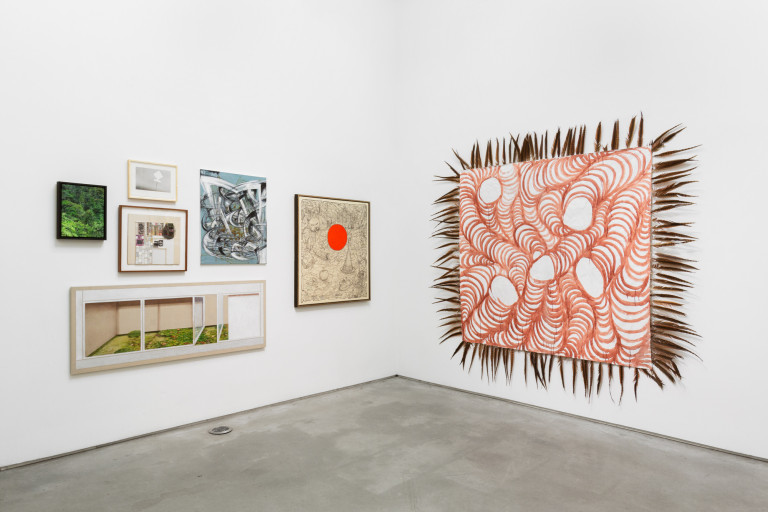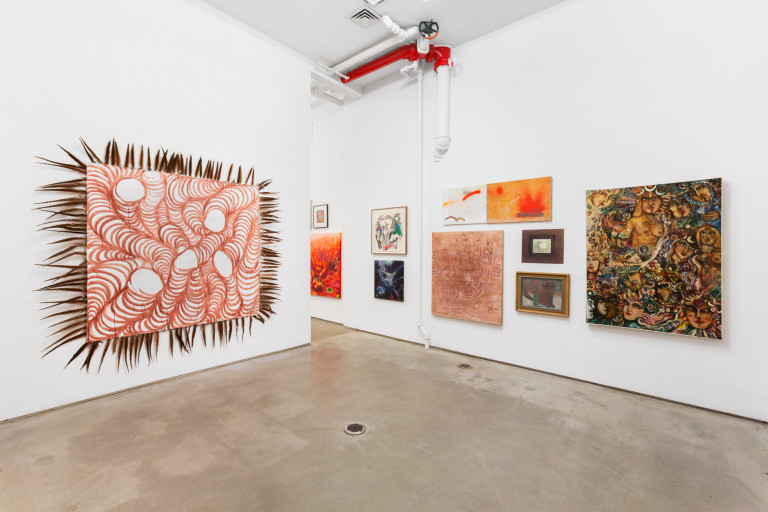Tauba Auerbach
Gene Beery
Michelle Blade
Bernice Bing
Robert Branaman
Joan Brown
Anne Buckwalter
Carl Cheng
Troy Lamarr Chew II
HyeGyeong Choi
Bruce Conner
Jean Conner
Jay DeFeo
Roy De Forest
Yuan Fang
Melvino Garretti
Sonia Gechtoff
Wally Hedrick
Colter Jacobsen
Jess
Chris Johanson
Ray Johnson
Sahar Khoury
Mercedes Llanos
Lynn Hershman Leeson
Judith Linhares
Phoebe Little
Haley Mellin
Gabriel Mills
Nina Molloy
Alicia McCarthy
Pachi Muruchu
Manuel Neri
Ruby Neri
Maia Cruz Palileo
Maija Peeples-Bright
Deborah Remington
Ed Ruscha
Muzae Sesay
Daisy Sheff
Alexis Smith
Hassel Smith
Norman Stiegelmeyer
Brach Tiller
Leo Valledor
Carlos Villa
Shanna Waddell
Chloe West
William T. Wiley
Franklin Williams
Livien Yin
Yuri Yuan
with RE/Search Publications
Walk Against the Wind
Dodie Bellamy
Few major art centers are as overlooked as that of Northern California. Though the iconoclastic energy coming out of San Francisco in the 1950s and 1960s, associated with the Beat movement and artist-run galleries such as the Six and Batman, inspired the nascent Los Angeles arts scene, LA quickly supplanted the Bay Area in national recognition. Some disgruntled artists complain that San Francisco is the place where careers go to die. Still, they are drawn here by the region’s free-thinking vibe, the innovation and even wildness that it allows. And more and more of them, such as Lynn Hershman Leeson, who pioneered artistic collaboration with the local tech industry, are finally getting the recognition they deserve.
When I was reviewing the Joan Brown retrospective at the San Francisco Museum of Modern Art, I casually asked a number of San Francisco-based writers and curators what they thought of her, and only one had heard of Brown. At the time of her death—1990—Brown was well-known locally, if not nationally, both as an artist and educator. So quickly does our collective memory fade. For any artist to survive history their legacy needs to be tended to, actively and incessantly. Walk Against the Wind offers both a reclamation and an expansion, reaching further and further out from the Beat Era artists who inspired it into the present, tracking mid-20th century unruliness as it mutates into the digital era.
A number of the younger artists in the exhibition have no direct link to the Beat Era or San Francisco, but according to the exhibition organizers, they encapsulate the overall spirit of their predecessors, and each share a radical sense of self. In a show that samples artists drawn from a span of three quarters of a century, what does a radical sense of self mean? Our current conversations about self, race, gender, embodiment, communal as well as personal boundaries, ownership, politics, factuality, and on and on, are vastly different than those of the mid-20th century. We’ve moved past their sense of future shock and broke on through to the other side.
For me, Walk Against the Wind questions what is the center, what is the margin, what is a career. What does it mean to be known or not known? Artists are presented, for the most part, as individuals rather than through their group affiliations. The exhibition is not thematic, not temporally or spatially organized. Throughout there is a focus on otherness that’s either chosen or endured. Always there is a refusal of dominant aesthetics. And a commitment to expanding the range of who is allowed to speak, to be seen.
In my in-between times these days I’m listening to an audiobook in which a Jungian analyst tells fairy tales in a disarmingly sexy voice. In the latest tale a naive girl is tricked by jealous village girls into throwing the heirloom necklace her grandmother gave her into a lake. In despair she flees to the forest, where she meets an old woman covered in scars and raw wounds that are hot-pink as the tits on a clay sculpture by Ruby Neri. The old woman tells the girl she can help her retrieve her legacy necklace if the girl kisses and licks each of her wounds and scars. Squelching her repulsion, the girl licks and kisses them tenderly, and the old woman experiences great relief. The old woman then whirls the girl over her head and throws her in the lake, where she sinks down down down, discovering she can breathe under water. In a grotto she encounters another old woman who is beautiful and whole, and wearing the legacy necklace she lost. The old woman thanks the girl for healing her sister. Then she bedazzles the girl’s legacy necklace with a hundred gems that flash across her neck gaudy as Chris Johanson’s bubble heads. When the girl returns home, the jealous girls go all gaga over her necklace. They too throw their legacy necklaces into the lake and follow the girl’s path. When they confront the gross old woman they refuse to lick and kiss her wounds, so when she throws them into the lake, they cannot breathe under water, and the monster that lives there eats them.
According to the sexy Jungian therapist, this story is about soul-making. Of course she says this. Every Jungian story is about soul making. But I see it as about the making of an artist. When she first meets the wounded old woman, the girl says the reason she lost her legacy necklace is that she believed a great untruth and that she was untrue to what she truly believed. To find one’s purpose as an artist, one must refuse the untruths we are all fed and instead insist on being true to what one truly believes. As varied as the artists are that Mick Meng and Sam Parker have assembled, this is one trait they all share: a refusal of the bullshit the dominant culture forces down our throats.
In honor of the funk-junk aesthetic that set Walk Against the Wind in motion, I’ve cobbled together a fairy tale/manifesto in which I repurpose language harvested from the PDF checklist the curators shared with me:
The girl-artist abandons linearity and walks into the richly textured forest. The forest lies on the outer edge of expression, troubling the divide between abstraction and figuration. It is anti-establishment and under recognized, “a flowering of anomalies and apostasies” (Rebecca Solnit). Contrarian approaches ricochet from limb to limb—fuck labels, fuck schools, fuck tedious expectations. Life in the forest defies parameters. Along the roots of massive trees flow experimentation, surprise, dynamic interplays. The turquoise of Troy Lamarr Chew II’s Nike high-tops recodes sky and water. There’s a mysticism in the air that startles, like turquoise blood bisecting a painting by Mercedes Llanos. The girl finds herself in a kaleidoscopic dream narrative. Animistic relationships open portals to mysterious interiors with ambiguous spaces. Polymorphic species cross pollinate with frenetic effervescence, rearranging society’s debris into socially conscious assemblages. The girl learns to choose spontaneity over perfection. Natural and artificial legacies commingle in a slapstick approximation of her radical sense of self.
